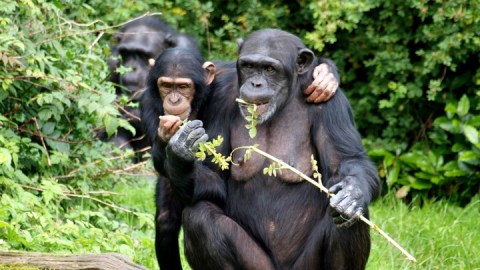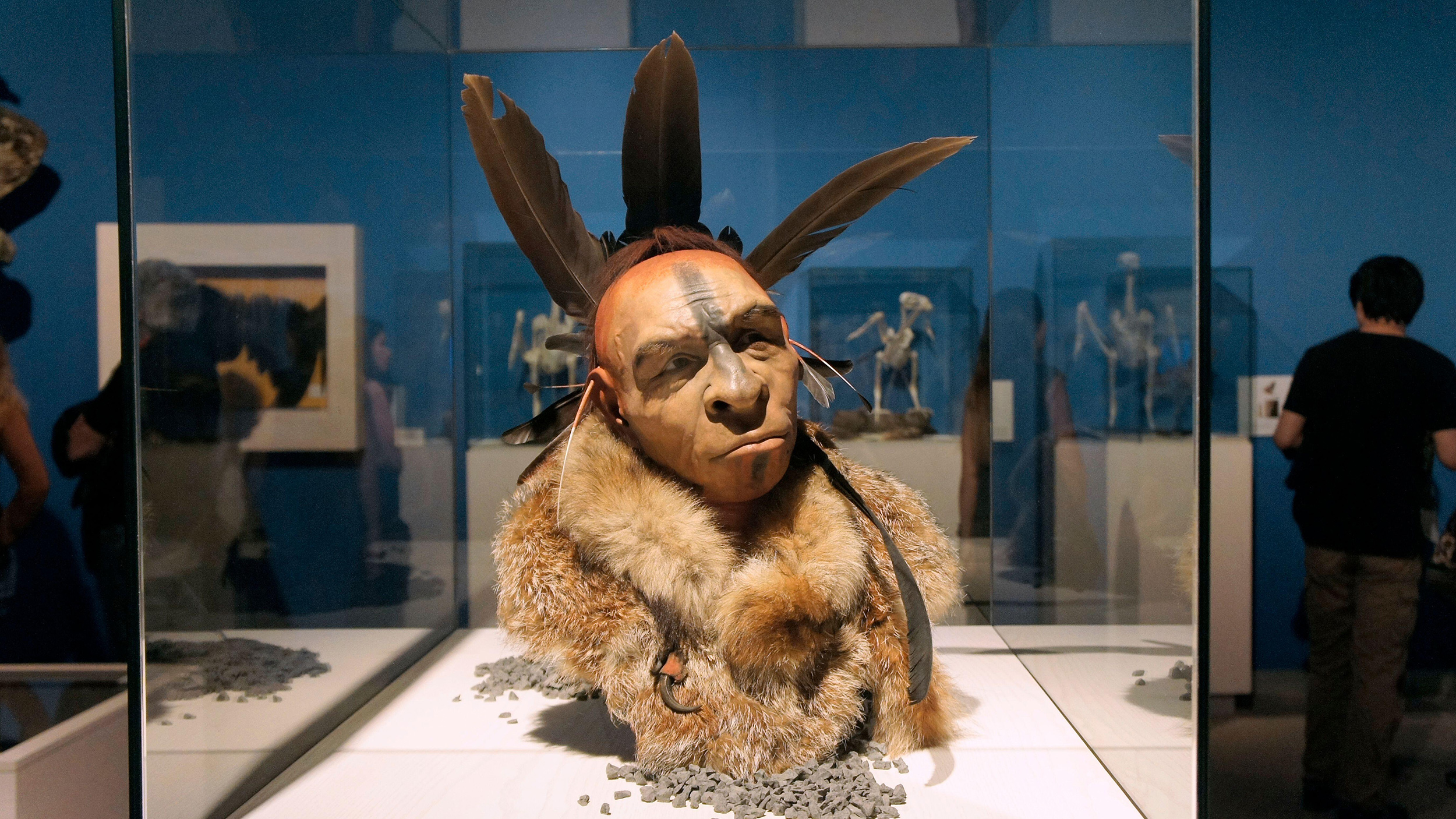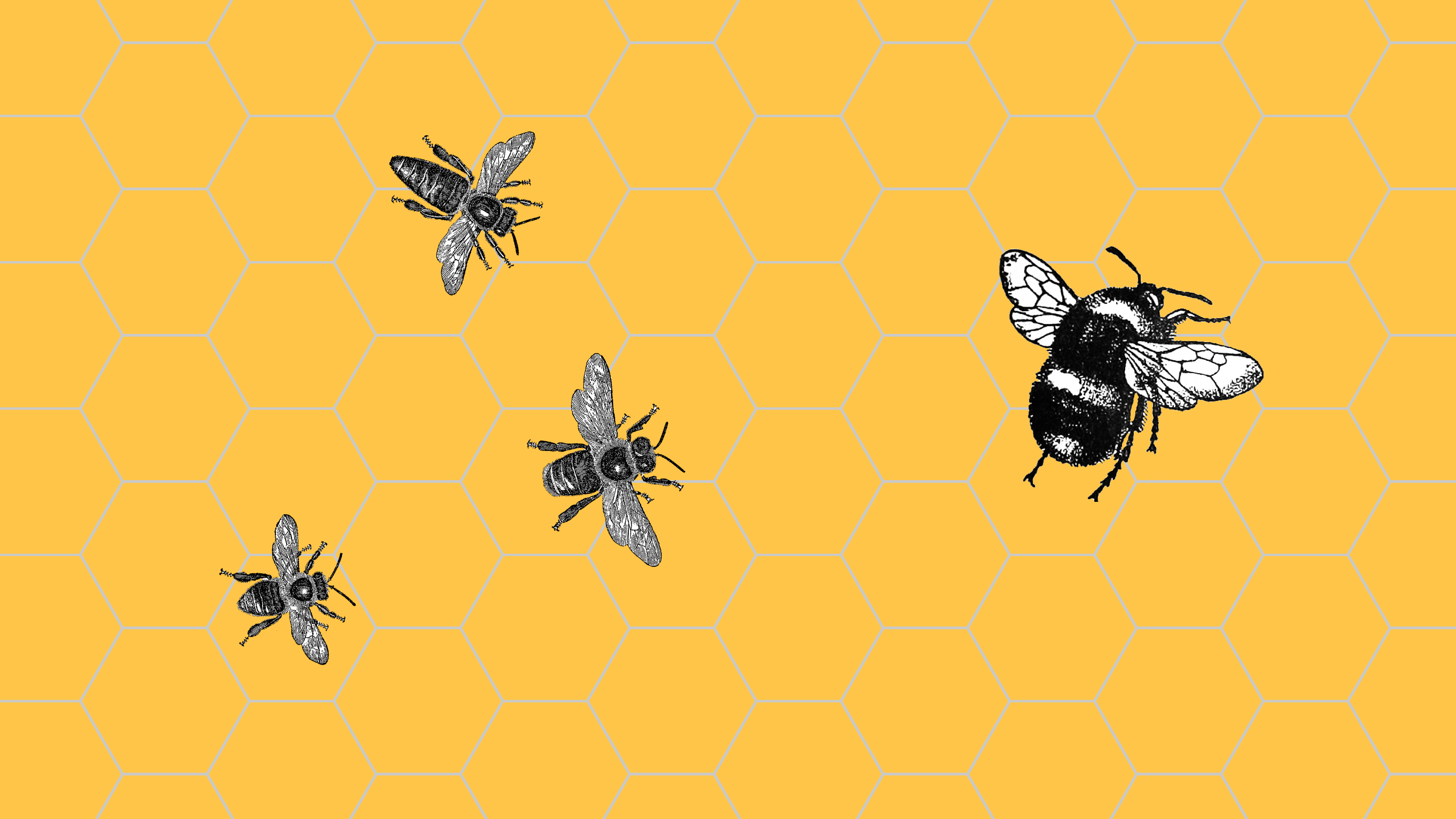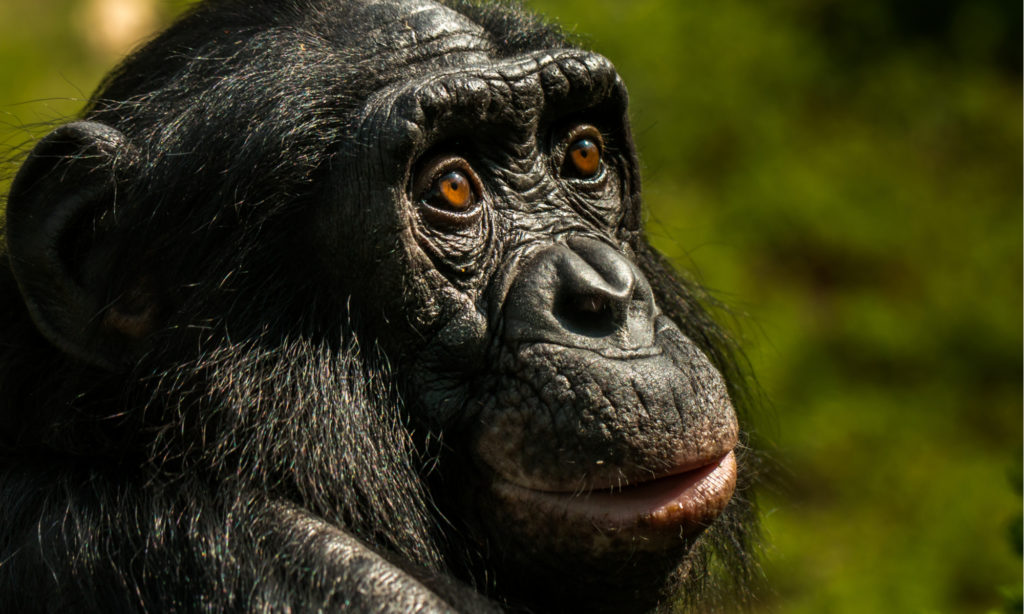Where Do Chimps Learn to Use Tools? Ask Mom.

Chimpanzees know how to use tools: They strip the leaves off twigs and use the sticks to dig tasty termites from termite mounds. Ever since Jane Goodall first observed the behavior back in the 1960s, scientists have wondered how they know to do it. We may now have the answer: Their mom teaches them.
Chimps are among a pretty select group of non-human tool users — the club of about 10 animals so far may well grow in the future, but for now, we’ve only observed a handful of animals using implements of some kind to accomplish something.
Crows like the endangered Hawaiian ‘Alalā use sticks to pry tasty bugs out of logs.
Octopi have been seen building temporary shelters from coconut shells.
Sea otters use stones to crack open shells of prey and dislodge abalone shells from rocks. Bears will stack boxes to reach a tasty treat. Dolphins carry sponges they use to dig food out of sand. And so on.
But scientists have wondered how each chimp comes by its technique, wondering if it’s instinctual behavior or something else. That is, until a chimp mother in the Nouabalé-Ndoki national park in the Republic of Congo was caught instructing Junior how to “fish for termites.” A team of scientists led by anthropologist Stephanie Musgrave of Washington University in St. Louis had set up cameras at termite mounds in the southern end of the park, in the Goualougo Triangle.
“In this population, chimpanzees select specific herb species to make their fishing probes, and they produce probes that have a particular brush-tipped design. By sharing tools, mothers may teach their offspring the appropriate material and form for manufacturing fishing probes,” Musgrave told Washington University’s the Source.
Co-author of the study Crickett Sanz adds, “It is easy for us to take for granted the importance of sharing information to learn complex skills, as it is ubiquitous in humans. Our research shows that the evolutionary origins of this behavior are likely rooted in contexts where particular skills are too challenging for an individual to invent on their own.”
Washington University is at the forefront of capturing chimpanzee behavior of video, developing a system that’s in use throughout the Congo.
The researchers point out that time spent teaching is time for food acquisition the mother seflfessly sacrifices for the benefit of her offspring. Moms.
The study offers a chance to examine the passage of knowledge from one generation to another, whether that’s in chimps or humans. Musgrave says, “Studying how young chimpanzees learn the tool skills particular to their group helps us to understand the evolutionary origins of culture and technology and to clarify how human cultural abilities are similar to or different from those of our closest living relatives.”
It’s also worth noting that this upends traditional Western human gender roles, suggesting there’s nothing biological about the way humans divide labor. In fact, a study has recently been released that suggests a human child’s intelligence comes from its mother. It’s a controversial conclusion and may not hold, but Chimp Mom, at least, might well agree.





